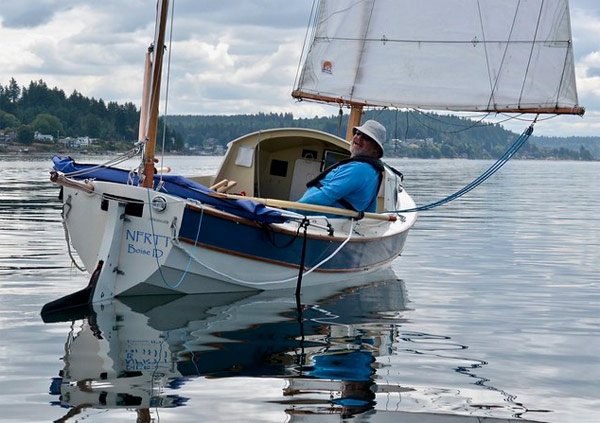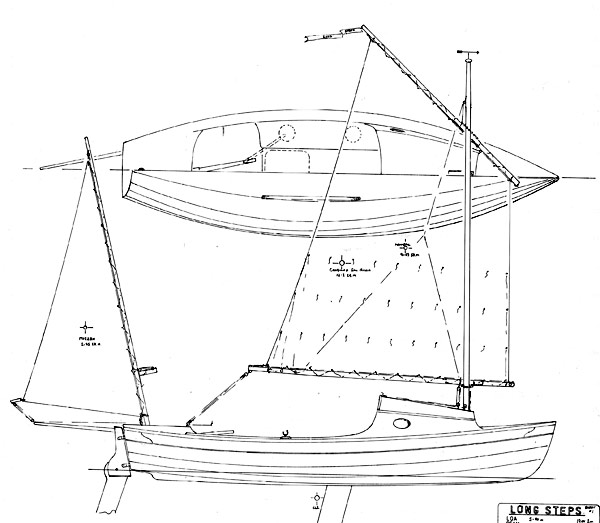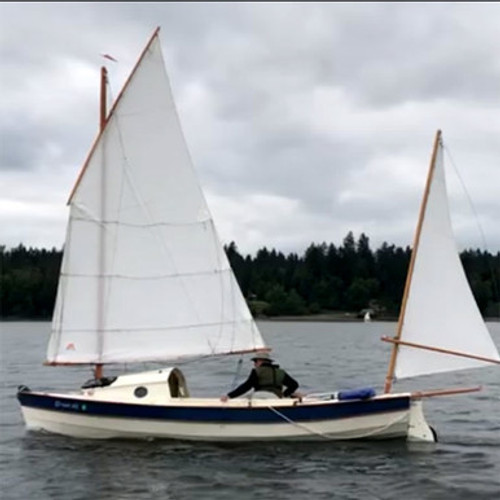Long Steps
For Long Steps Printed Plans, click HERE
For Long Steps Plans Digital Download, click HERE
For Long Steps Cutting Files, click HERE
I think that I’ve mentioned before, that in my plans range we have “Tread Lightly” which came from a little poem about how we should treat the earth on which we walk (metaphor), and “Walkabout” which is an English language word for the spiritual wanderings of the Australian Aboriginal people, and that “Long Steps” is the next in the series of names. I am wanting to travel further, to see new coasts, to explore new territory both within myself and in terms of where I will sail.
Hence “Long Steps”.

To sail along the coast of New Zealand is a real adventure, there are wonderful harbours, tiny sheltered coves, rivermouths and amazing beaches to explore. There are though stretches where there are cliffs and reefs, where a haven from foul weather may be long way off, and any boat venturing along there needs to have both a cautious skipper and the ability to cope with seriously bad weather.
Other considerations are that the boat should be fast. Not blazingly fast as in a racing boat but the difference between a conventional sailing dayboat which will average 3.5 knots over a days sailing and one that will average 5 knots is going to make close to two hours difference when covering a 35 mile days distance. A boat that will maintain a good speed on all points of sail and in a wide range of conditions without stressing the crew is very desisrable when covering long distances day after day.
By not stressing the crew, I mean that it should offer some protection from wind and spray, several comfortable seating positions, a place where the boat can be helmed standing up, and she should have a comfortable motion in a seaway.
Further on the stress and fatigue issue, the force needed to adjust the sails sheets should be low, the helm should be light, the boat should track easily and be able to hold a course without the skipper at the helm.
Very very important, as she is intended to go into remote areas far from possible assistance this boat has to be such that she can be self rescued by her solo skipper in case of a capsize or swamping.
She has to carry a weeks worth of stores, gear for cooking and camping aboard including a really effective tent, ground tackle so she can anchor , communications and safety equipment, spare clothing and a bucket.
There are lots more considerations to mull over when I’m chewing the end of my pencil sitting at the drawing board, too many to list here.
Designing or all of the above is a big ask, and the design work started well before picking up the pencil and drawing “Long Steps”. I’d written all this out, quantified it, estimated weights and spaces, identified out the target hydrodynamic numbers and the shape required to fit all of that before I started working on the shape of the hull and the rig.
So here is the solution to the equation, Long Steps is 5.850 long plus boomkin and in my case a short “prod” bowsprit for a single luffed spinnaker. She’s narrow enough to row, has a self draining cockpit floor that’s 0.600 wide by 2.7 long, has around 140 kg of water ballast, a “standing up” area just ahead of the tiller, and I’m planning to put a swimming pool beanbag in there as well to ease the back and butt. Sshe has over 2 tons of bouyancy built in, all of which can be accessed through hatches for stores and equipment, and of course there is the little “cabin” which is really a raised storage and bouyancy chamber with a cuddy, now called the “Cuddly” in the case of my SCAMP design which the idea came from and which is a practical and much loved feature of that boat.
The hull shape is a development of the Walkabout, fast, dry, easily rowed, with the ballast, the offset centerboard and self draining cockpit of the SCAMP.
The rig is the lugsail with mizzen yawl that’s become popular on several of my other cruisers, and, well, its time I stopped rambling and showed you the pictures.
We have below the body plan showing the shape and structure as well as the rig, note that all the fittings are from the Duckworks catalogue, good gear at a good price by the way. DW will have the fittings list and can supply a package deal including all your bits of string.








